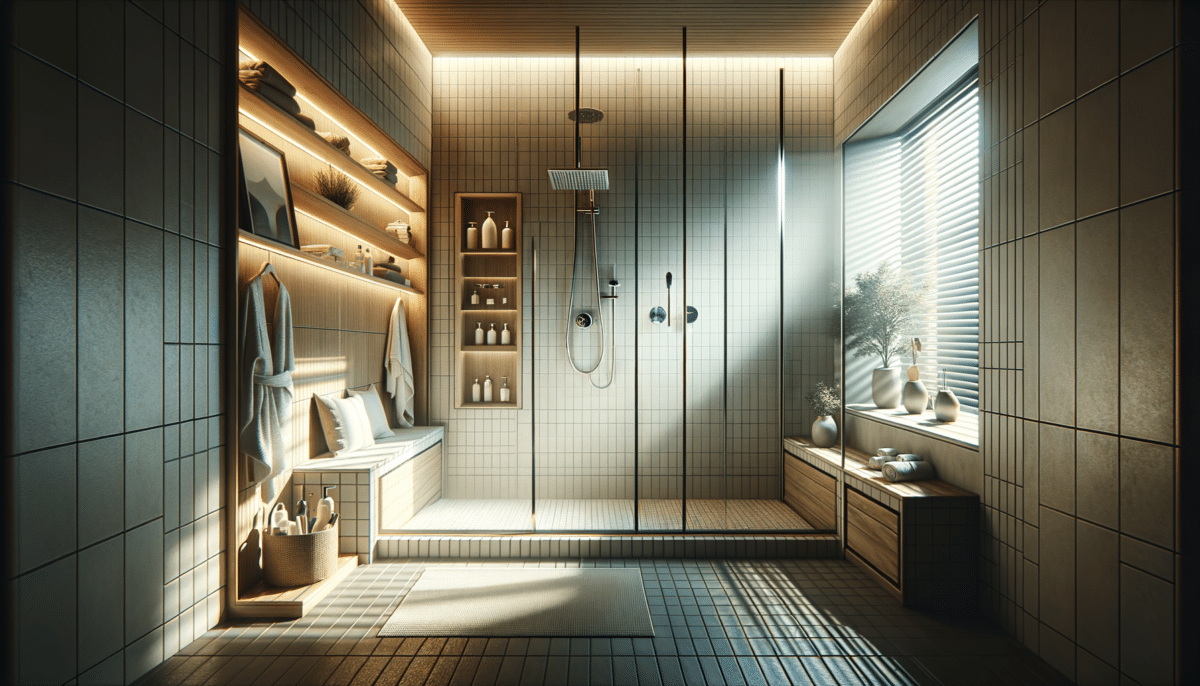The Rise of Walk-In Showers
Walk-in showers have become a popular choice in modern bathroom design, offering a sleek and contemporary aesthetic that appeals to many homeowners. Unlike traditional tub-shower combinations, walk-in showers provide a seamless, open space that can make a bathroom feel larger and more luxurious. This trend has been driven by a desire for more accessible and convenient bathing solutions, especially as people look to age in place. With the increasing focus on minimalism and functionality, walk-in showers are not only practical but also add value to a home. They are particularly advantageous in small bathrooms where space optimization is crucial. By eliminating the need for a bathtub, walk-in showers free up valuable floor space, allowing for creative layout options. Furthermore, they are easier to clean and maintain, making them a practical choice for busy households.
Design Options and Customization
The beauty of walk-in showers lies in their versatility and the wide range of design options available. Whether you prefer a minimalist look or a more elaborate design, there are countless ways to customize a walk-in shower to suit your personal style and needs. Some popular design elements include frameless glass panels, which create an open and airy feel, and textured tiles that add visual interest and prevent slipping. For those looking to make a statement, consider incorporating a feature wall with bold tiles or a unique pattern. Additionally, the choice of showerheads, from rain showers to handheld options, can enhance the overall bathing experience. Customization doesn’t stop at aesthetics; practical features like built-in benches, niches for toiletries, and grab bars can be integrated to increase functionality and safety. With the right design choices, a walk-in shower can transform any bathroom into a spa-like retreat.
Cost Considerations and Budgeting
While walk-in showers can be an attractive addition to any home, it’s important to consider the costs involved. The price of installing a walk-in shower can vary significantly depending on factors such as materials, labor, and the complexity of the design. On average, a basic walk-in shower installation can range from a few thousand to several thousand dollars. However, there are ways to manage costs without compromising on quality. Opting for standard-sized glass panels instead of custom ones, choosing cost-effective tile options, and keeping plumbing alterations to a minimum can help keep expenses in check. It’s also worth exploring prefabricated shower kits, which offer a more budget-friendly alternative while still providing a stylish finish. By carefully planning and prioritizing essential features, homeowners can enjoy the benefits of a walk-in shower without breaking the bank.
Accessibility and Safety Features
Walk-in showers are renowned for their accessibility, making them an ideal choice for individuals with mobility challenges or those planning for future accessibility needs. The absence of a high tub wall makes entry and exit much easier and safer, reducing the risk of slips and falls. To further enhance safety, consider incorporating non-slip flooring materials and installing grab bars strategically around the shower area. Additional features such as a built-in bench or folding seat can provide a comfortable and safe bathing experience for those who need to sit while showering. Handheld showerheads are another practical addition, allowing for better control and flexibility. By focusing on accessibility and safety, walk-in showers can offer peace of mind and independence to users of all ages and abilities.
Environmental Impact and Water Efficiency
In today’s eco-conscious world, the environmental impact of home improvements is an important consideration. Walk-in showers can contribute to water conservation efforts, especially when equipped with water-saving fixtures. Low-flow showerheads and faucets can significantly reduce water usage without sacrificing performance, helping to lower utility bills and conserve resources. Additionally, the open design of walk-in showers typically results in less water spillage, further minimizing waste. When selecting materials, consider eco-friendly options such as recycled tiles or sustainably sourced wood for benches. These choices not only reduce the environmental footprint but also add a unique touch to the shower’s design. By incorporating water-efficient and sustainable elements, walk-in showers can align with a homeowner’s commitment to environmental responsibility while providing a modern and efficient bathing solution.
